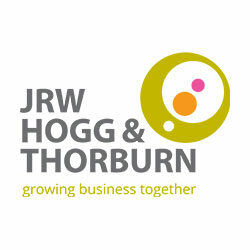Retail therapy
As a retailer, it is very likely that you will on occasion run special offers and promotions to boost sales, but what do you need to consider in order to avoid unexpected VAT consequences? JRW’s Bob Johnstone provides you with some good advice.
Correct amount
Normally VAT is due on the price charged if that is the only consideration received. However, in the case of a trade-in, such as a part exchange, its value should also be taken into account.
But what happens when you have a special offer and provide free goods or services? For example, your business could offer a “buy one get one free” promotion. It could also offer something similar such as “get ten for the price of eight”, or “buy a sofa and get a free footstool”. The particulars will depend on what line of business you are in, but in all cases HMRC accepts that the deal is for an all-inclusive price.
For Example
You sell a sofa for £1,000 and give away a free footstool worth £250 as an incentive to buy. You account for VAT on a £1,000 and not £1,250.
Mixed supply complications
But there can be complications if goods being sold together are liable to VAT at different rates, as you will need to apportion the VAT on your invoice. This can often come up where an exempt item is sold in lavish packaging which would be liable at the standard rate if it were sold by itself. An example would be nappies that are sold with a toy box, or food items sold with packaging that is intended for further use.
If you are bundling goods with different VAT rates together as part of a promotion, you will need to consider whether it is a mixed supply, i.e. you need to apportion the VAT between the different items by value, or whether you can take advantage of the linked supply concession.
Concession
This concession allows a sale to be treated as a single supply rather than a mixed supply, meaning no apportionment will be required. Instead, you simply use the rate applicable to the main item being sold. In order for the concession to apply, the secondary item must:
• Be included with the main supply at a single price
• Cost no more than 20% of the total cost of both items; and
• Cost no more than £1 (excluding VAT) if the goods are intended for retail sale or £5, in other cases.
Invoice correctly
You must be careful in the way that you present and invoice a special offer to a customer. In a Tribunal case, a jeweller occasionally gave an extra item of expensive jewellery; so an item which had cost £1,000 might be given to the buyer of a piece priced at £10,000. The jeweller claimed that it would only be done in order to clinch a deal. However, the only evidence of the circumstances were the invoices for fewer than half the transactions, on all of which the extra item was stated as being “with compliments”. The Tribunal held these to be gifts with output tax due on the cost of them, not items sold with the main ones for an all-in price.
ADVICE
In order to avoid this situation, ensure the invoice clearly shows that the price for all the items is intended to be all inclusive to avoid them being treated as gifts.
In summary, where you are giving away free items as part of a bundle or discounting prices, you account for VAT on the total price paid by the customer. However, ensure your invoice reflects the fact that the price is an “all-inclusive” payment for all the items, or HMRC could charge you VAT on the free items.
